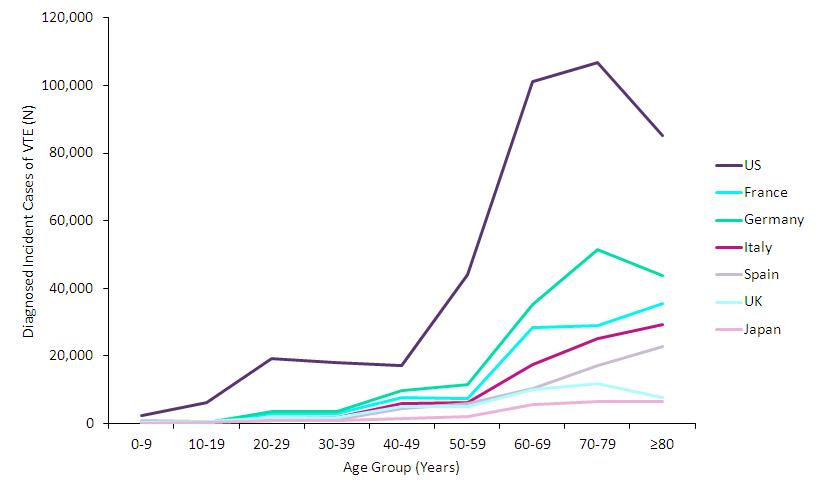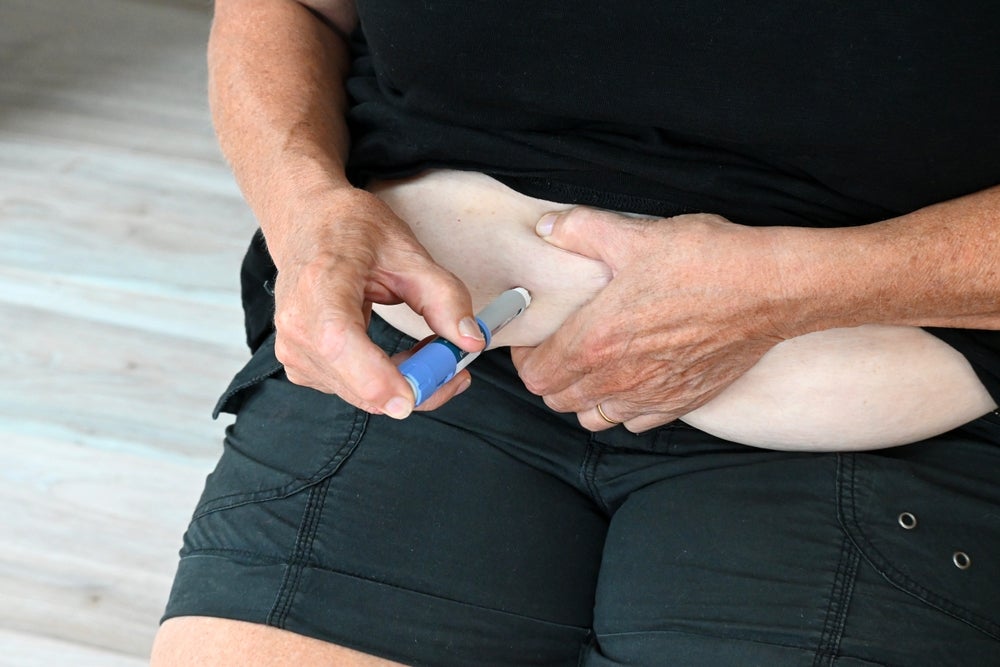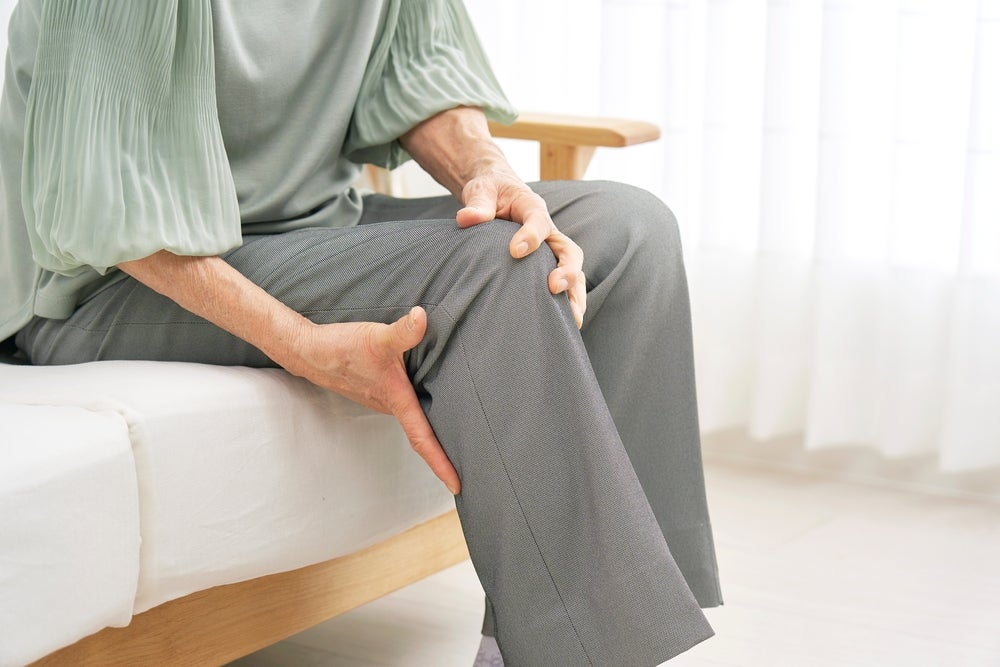
Venous thromboembolism (VTE) is a blood clot (thrombosis) in the circulatory system that disrupts blood flow, with serious consequences for affected individuals.
VTE types include deep vein thrombosis (DVT), where a blood clot forms in a deep vein, and pulmonary embolism (PE), which occurs when the clot breaks off and travels from the leg up to the lungs. Blood clots usually form after a period of physical inactivity, such as after an operation, when patients are unable to move their legs. VTE is a serious, life-threatening condition that requires urgent medical attention.
GlobalData epidemiologists forecast an increase in the diagnosed incident cases of VTE in the seven major markets (7MM) the US, France, Germany, Italy, Spain, the UK, and Japan from 896,377 cases in 2016 to 1,071,438 cases in 2026, with an annual growth rate of 1.95%.
VTE can develop at any age, but it is more common in adults ages 60 years and older and is very rare in children. Figure 1 presents the age-specific cases of VTE in the 7MM in 2016.
Figure 1: 7MM, Age-Specific Diagnosed Incident Cases of Venous Thromboembolism, Men and Women, N

How well do you really know your competitors?
Access the most comprehensive Company Profiles on the market, powered by GlobalData. Save hours of research. Gain competitive edge.

Thank you!
Your download email will arrive shortly
Not ready to buy yet? Download a free sample
We are confident about the unique quality of our Company Profiles. However, we want you to make the most beneficial decision for your business, so we offer a free sample that you can download by submitting the below form
By GlobalDataIn 2016, adults aged 70–79 years made up the highest proportion of diagnosed incident cases of VTE, accounting for 27.62% of the total in the 7MM. Across all markets, more than 70% of all diagnosed incident cases of VTE occurred in adults aged 60 years and older. Over the forecast period, this trend will remain consistent, as GlobalData epidemiologists do not expect any major changes in the incidence of VTE.
VTE is a life-threatening condition that is often both sudden and silent, with high healthcare costs. There is strong evidence that shows disease incidence increases with age and that white populations in high-income countries are currently most at risk. Older surgical patients, specifically those undergoing knee or hip replacement procedures, and medically ill hospitalised patients are at a significantly increased risk of developing VTE.
Ageing populations with other associated conditions such as arthritis or osteoporosis, which impede physical activity, are also at a greater risk of developing DVT and VTE. The condition also has a high propensity for recurrence.
Individuals most at risk should be monitored to best provide adequate treatment and prophylactic measures.







